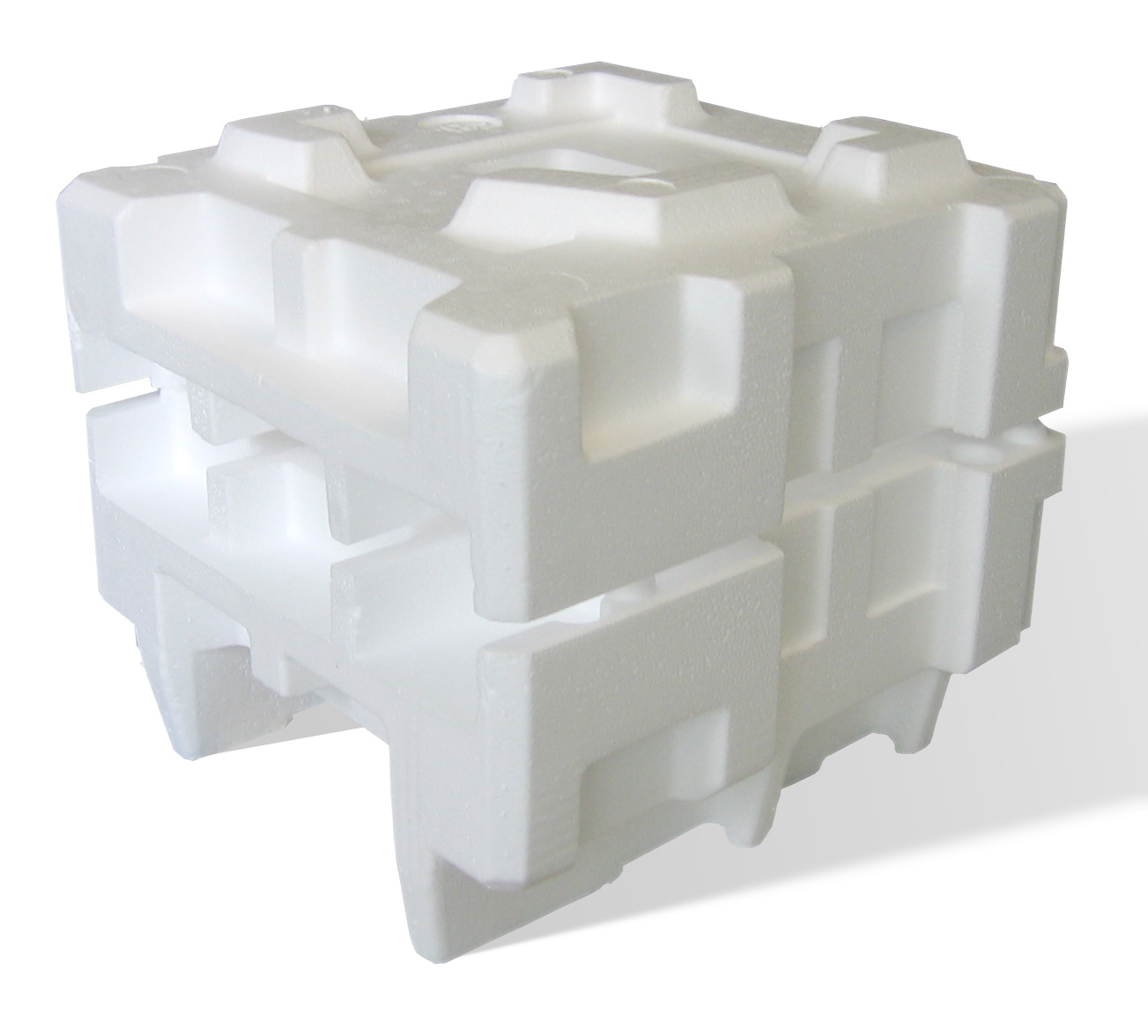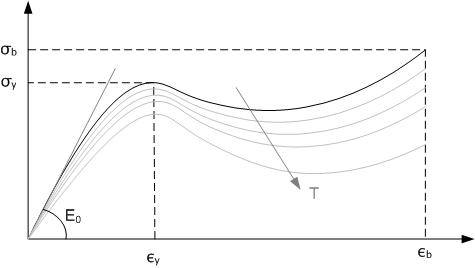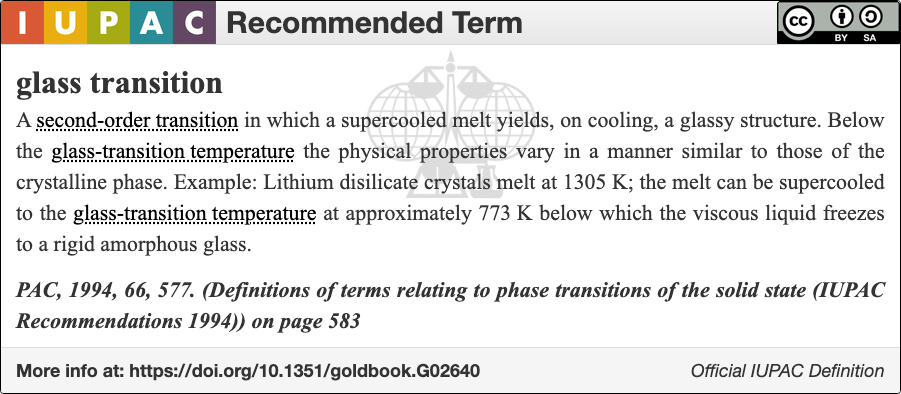|
Polystyrene
Polystyrene (PS) is a synthetic polymer made from monomers of the aromatic hydrocarbon styrene. Polystyrene can be solid or foamed. General-purpose polystyrene is clear, hard, and brittle. It is an inexpensive resin per unit weight. It is a poor barrier to air and water vapor and has a relatively low melting point. Polystyrene is one of the most widely used plastics, with the scale of its production being several million tonnes per year. Polystyrene is naturally transparent to visible light, but can be colored with colorants. Uses include protective packaging (such as packing peanuts and optical disc jewel cases), containers, lids, bottles, trays, tumblers, disposable cutlery, in the making of models, and as an alternative material for phonograph records. As a thermoplastic polymer, polystyrene is in a solid (glassy) state at room temperature but flows if heated above about 100 °C, its glass transition temperature. It becomes rigid again when cooled. This te ... [...More Info...] [...Related Items...] OR: [Wikipedia] [Google] [Baidu] |
Foam Peanut
Foam peanuts, also known as foam popcorn, packing peanuts, or packing noodles, are a common loose-fill packaging and cushioning material used to prevent damage to fragile objects during shipping. They are shaped to interlock when compressed and free flow when not compressed. They are roughly the size and shape of an unshelled peanut and commonly made of expanded polystyrene foam. 50–75 millimetres (2-3 in) of peanuts are typically used for cushioning and void filling packaging applications. The original patent was filed for by Robert E. Holden in 1962 and was granted in 1965. Polystyrene foam Polystyrene-based packing peanuts were developed and patented by Tektronix Inc. They were made commercially available circa 1965 by Dow Chemical. Originally made from 100% virgin polystyrene resin, peanuts made from 100% recycled polystyrene have been commercially available since the mid-90s. The color and shape sometimes indicate what it is made of and who made it. Often green ... [...More Info...] [...Related Items...] OR: [Wikipedia] [Google] [Baidu] |
Thermoplastic
A thermoplastic, or thermosoftening plastic, is any plastic polymer material that becomes pliable or moldable at a certain elevated temperature and solidifies upon cooling. Most thermoplastics have a high molecular weight. The polymer chains associate by intermolecular forces, which weaken rapidly with increased temperature, yielding a viscous liquid. In this state, thermoplastics may be reshaped, and are typically used to produce parts by various polymer processing techniques such as injection molding, compression molding, calendering, and extrusion. Thermoplastics differ from thermosetting polymers (or "thermosets"), which form irreversible chemical bonds during the curing process. Thermosets do not melt when heated, but typically decompose and do not reform upon cooling. Above its glass transition temperature and below its melting point, the physical properties of a thermoplastic change drastically without an associated phase change. Some thermoplastics do not fully ... [...More Info...] [...Related Items...] OR: [Wikipedia] [Google] [Baidu] |
Styrofoam
Styrofoam is a brand of closed-cell extruded polystyrene foam (XPS), manufactured to provide continuous building insulation board used in walls, roofs, and foundations as thermal insulation and as a water barrier. This material is light blue in color and is owned and manufactured by DuPont. DuPont also has produced a line of green and white foam shapes for use in crafts and floral arrangements. The term ''styrofoam'' has become a genericized trademark; it is often used in the United States as a colloquial term to refer to expanded (not extruded) polystyrene foam (EPS). Outside the United States, EPS is most commonly referred to as simply "polystyrene" with the term "styrofoam" being used in its capacity to describe all forms of extruded polystyrene, not just the Dupont brand itself. Polystyrene (EPS) is often used in food containers, coffee cups, and as cushioning material in packaging. Styrofoam is, however, a far less dense material than EPS and is more commonly suited to t ... [...More Info...] [...Related Items...] OR: [Wikipedia] [Google] [Baidu] |
Plastic
Plastics are a wide range of synthetic polymers, synthetic or Semisynthesis, semisynthetic materials composed primarily of Polymer, polymers. Their defining characteristic, Plasticity (physics), plasticity, allows them to be Injection moulding, molded, Extrusion, extruded, or Compression molding, pressed into a diverse range of solid forms. This adaptability, combined with a wide range of other properties such as low weight, durability, flexibility, chemical resistance, low toxicity, and low-cost production, has led to their widespread use around the world. While most plastics are produced from natural gas and petroleum, a growing minority are produced from renewable resources like polylactic acid. Between 1950 and 2017, 9.2 billion metric tons of plastic are estimated to have been made, with more than half of this amount being produced since 2004. In 2023 alone, preliminary figures indicate that over 400 million metric tons of plastic were produced worldwide. If global trends ... [...More Info...] [...Related Items...] OR: [Wikipedia] [Google] [Baidu] |
Vacuum Forming
Vacuum forming is a simplified version of thermoforming, where a sheet of plastic in various forms of High Impact Polystyrene Sheet (HIPS) for low impact products, or ABS for bathroom shower trays, and HDPE for exterior vehicle parts, plus various other types of vacuum formable materials) is heated to a forming temperature, stretched onto a single-surface moulding (process), mould, and forced against the mould by a vacuum. This process can be used to form plastic into permanent objects such as turnpike signs and protective covers. Normally draft angles are present in the design of the mould (a recommended minimum of 3°) to ease removal of the formed plastic part from the mould. Relatively deep parts can be formed if the formability, formable sheet is mechanically or pneumatically stretched prior to bringing it into contact with the mold surface and applying the vacuum. Suitable materials for use in vacuum forming are conventionally thermoplastics. The most common and easiest t ... [...More Info...] [...Related Items...] OR: [Wikipedia] [Google] [Baidu] |
Polymer
A polymer () is a chemical substance, substance or material that consists of very large molecules, or macromolecules, that are constituted by many repeat unit, repeating subunits derived from one or more species of monomers. Due to their broad spectrum of properties, both synthetic and natural polymers play essential and ubiquitous roles in everyday life. Polymers range from familiar synthetic plastics such as polystyrene to natural biopolymers such as DNA and proteins that are fundamental to biological structure and function. Polymers, both natural and synthetic, are created via polymerization of many small molecules, known as monomers. Their consequently large molecular mass, relative to small molecule compound (chemistry), compounds, produces unique physical property, physical properties including toughness, high rubber elasticity, elasticity, viscoelasticity, and a tendency to form Amorphous solid, amorphous and crystallization of polymers, semicrystalline structures rath ... [...More Info...] [...Related Items...] OR: [Wikipedia] [Google] [Baidu] |
Eduard Simon
Johann Eduard Simon (18 September 1789 – 19 June 1856) was an apothecary in Berlin, Germany. Johann Eduard Simon accidentally discovered polystyrene in 1839. Simon distilled an oily substance from storax Storax (; , ''stúrax''), often commercially sold as styrax, is a natural fragrant resin isolated from the wounded bark of ''Liquidambar orientalis'' Mill. (Asia Minor) and ''Liquidambar styraciflua'' L. (Eastern US, Mexico, Central America) (A ..., the resin of the Sweetgum tree, '' Liquidambar orientalis'', which he named "styrol". Several days later he found that the styrol had thickened, presumably due to polymerisation, into a jelly which he dubbed styrol oxide ("Stryroloxyd").Scheirs, John"Historical Overview of Syrenic Polymers"in Notes 19th-century German chemists German apothecaries 1789 births 1856 deaths Chemists from the Kingdom of Prussia {{Germany-engineer-stub ... [...More Info...] [...Related Items...] OR: [Wikipedia] [Google] [Baidu] |
Foam
Foams are two-phase materials science, material systems where a gas is dispersed in a second, non-gaseous material, specifically, in which gas cells are enclosed by a distinct liquid or solid material. Note, this source focuses only on liquid foams. Note, this source also focuses on liquid foams. Foam "may contain more or less liquid [or solid] according to circumstances", although in the case of gas-liquid foams, the gas occupies most of the volume. In most foams, the volume of gas is large, with thin films of liquid or solid separating the regions of gas. Etymology The word derives from the Old High German, medieval German and otherwise obsolete ''veim'', in reference to the "frothy head forming in the glass once the beer has been freshly poured" (cf. ''ausgefeimt''). Structure A foam is, in many cases, a multi-scale system. One scale is the bubble: materials science, material foams are typically randomness, disordered and have a variety of bubble sizes. At larger siz ... [...More Info...] [...Related Items...] OR: [Wikipedia] [Google] [Baidu] |
Glass Transition Temperature
The glass–liquid transition, or glass transition, is the gradual and reversible transition in amorphous materials (or in amorphous regions within semicrystalline materials) from a hard and relatively brittle "glassy" state into a viscous or rubbery state as the temperature is increased. ISO 11357-2: Plastics – Differential scanning calorimetry – Part 2: Determination of glass transition temperature (1999). An amorphous solid that exhibits a glass transition is called a glass. The reverse transition, achieved by supercooling a viscous liquid into the glass state, is called vitrification. The glass-transition temperature ''T''g of a material characterizes the range of temperatures over which this glass transition occurs (as an experimental definition, typically marked as 100 s of relaxation time). It is always lower than the melting temperature, ''T''m, of the crystalline state of the material, if one exists, because the glass is a higher energy state (or enthalpy at const ... [...More Info...] [...Related Items...] OR: [Wikipedia] [Google] [Baidu] |
Apothecary
''Apothecary'' () is an Early Modern English, archaic English term for a medicine, medical professional who formulates and dispenses ''materia medica'' (medicine) to physicians, surgeons and patients. The modern terms ''pharmacist'' and, in British English, ''chemist'' have taken over this role. In some languages and regions, terms similar to "apothecary" have survived and denote modern pharmacies or pharmacists. Apothecaries' investigation of Herbal medicine, herbal and chemical ingredients was a precursor to the modern sciences of chemistry and pharmacology. In addition to dispensing herbs and medicine, apothecaries offered general medical advice and a range of services that are now performed by other specialist practitioners, such as surgeons and Obstetrics and gynaecology, obstetricians. Apothecary shops sold ingredients and the medicines they prepared wholesale to other medical practitioners, as well as dispensing them to patients. In 17th-century England, they also contro ... [...More Info...] [...Related Items...] OR: [Wikipedia] [Google] [Baidu] |
Environment (biophysical)
The natural environment or natural world encompasses all biotic and abiotic things occurring naturally, meaning in this case not artificial. The term is most often applied to Earth or some parts of Earth. This environment encompasses the interaction of all living species, climate, weather and natural resources that affect human survival and economic activity. The concept of the ''natural environment'' can be distinguished as components: * Complete ecological units that function as natural systems without massive civilized human intervention, including all vegetation, microorganisms, soil, rocks, plateaus, mountains, the atmosphere and natural phenomena that occur within their boundaries and their nature. * Universal natural resources and physical phenomena that lack clear-cut boundaries, such as air, water and climate, as well as energy, radiation, electric charge and magnetism, not originating from civilized human actions. In contrast to the natural environment is the ... [...More Info...] [...Related Items...] OR: [Wikipedia] [Google] [Baidu] |
Litter
Litter consists of waste products that have been discarded incorrectly, without consent, at an unsuitable location. The waste is objects, often man-made, such as aluminum cans, paper cups, food wrappers, cardboard boxes or plastic bottles, but also large and hazardous items of rubbish such as tires, electrical appliances, electronics, batteries and large industrial containers are sometimes dumped in isolated locations, such as national forests and other public lands. Litter is a type of human impact on the environment and is a serious environmental problem in many countries. Litter can exist in the environment for long periods of time before decomposition and be transported over large distances into the world's oceans. Litter can negatively affect quality of life. Cigarette#Cigarette butt, Cigarette butts are the most littered item in the world, with an estimated 4.5 trillion discarded each year. Estimates of the required time for cigarette butts to break down vary, ranging fro ... [...More Info...] [...Related Items...] OR: [Wikipedia] [Google] [Baidu] |











